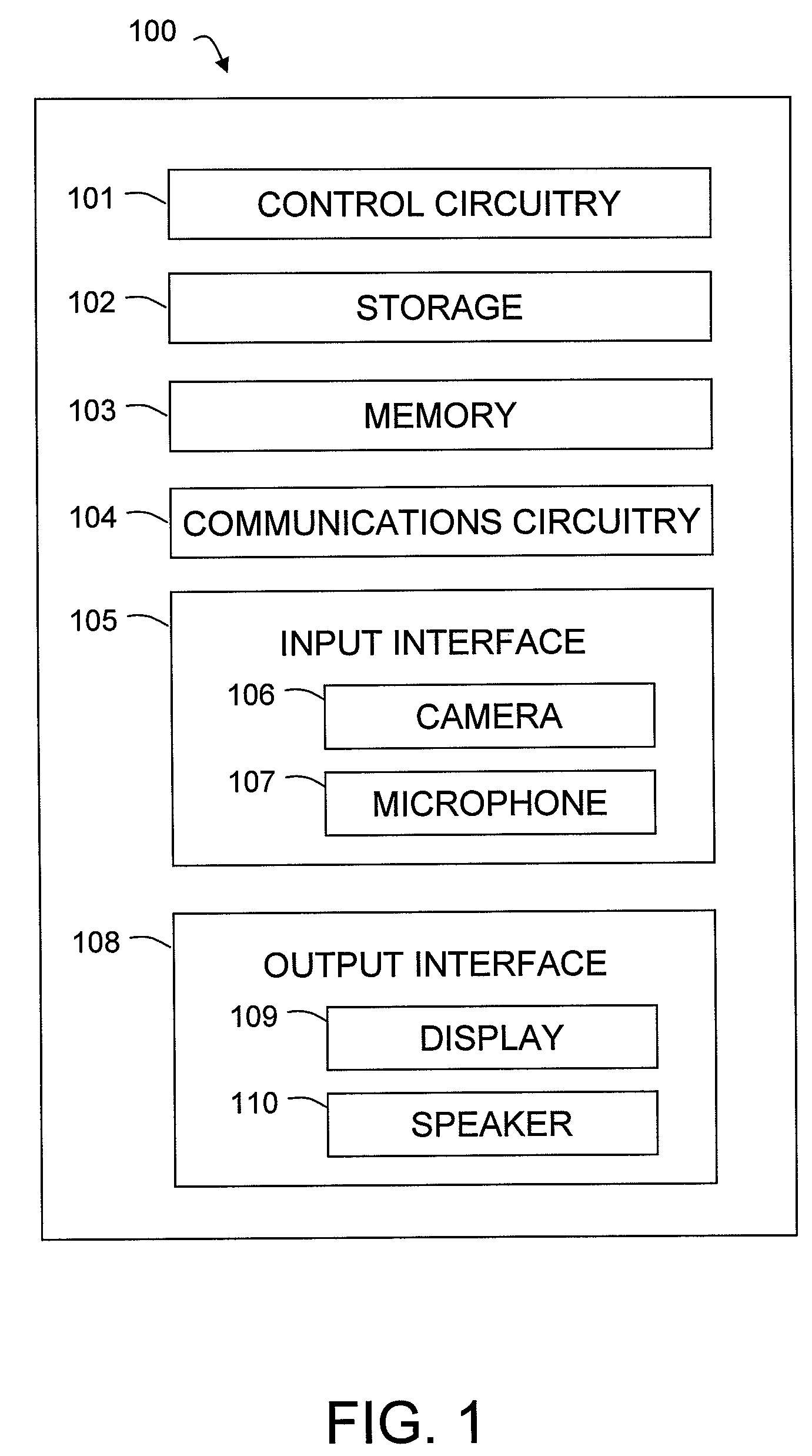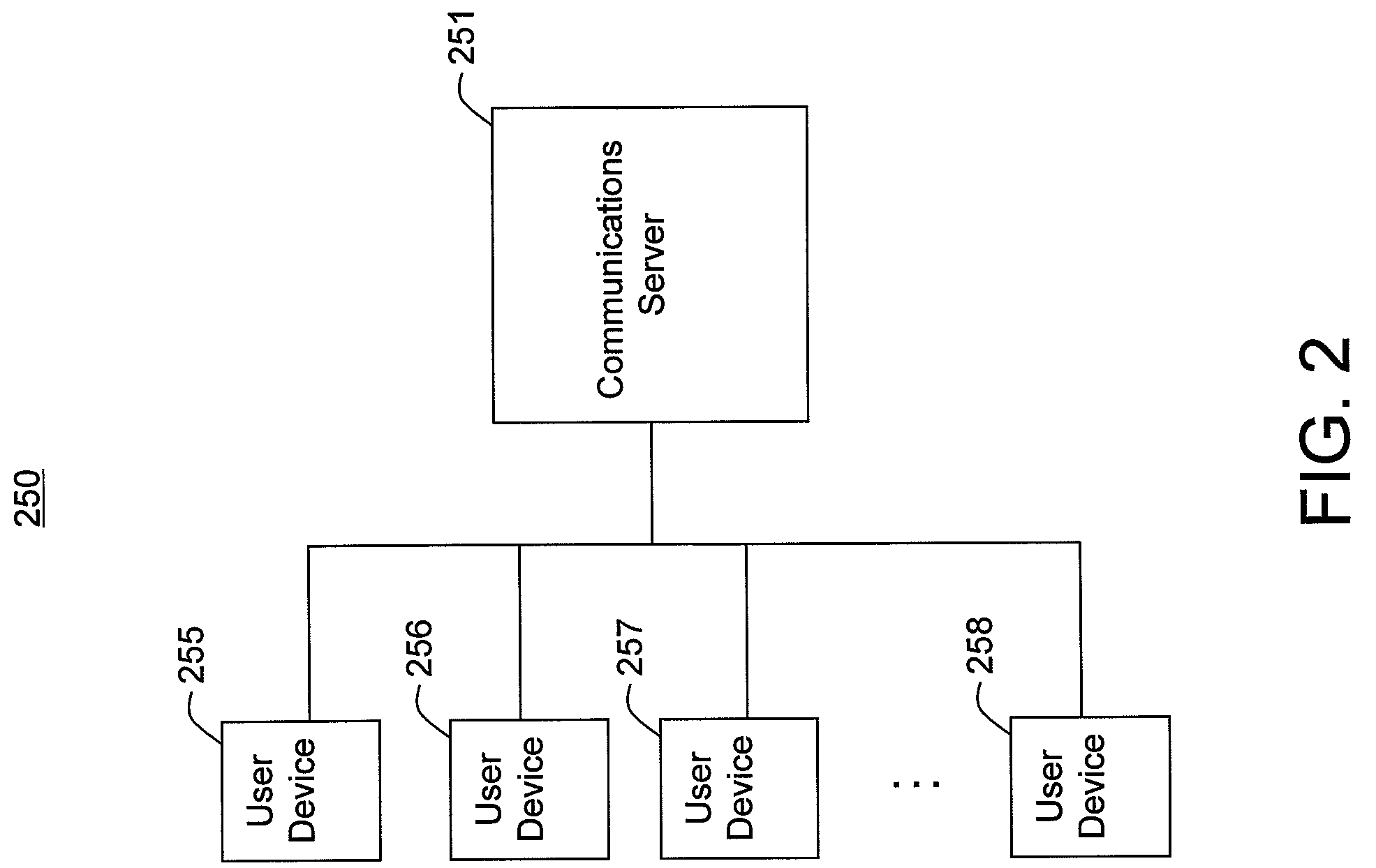Multiparty communications systems and methods that utilize multiple modes of communication
a communication system and communication method technology, applied in the field of multi-mode communication systems and methods, can solve the problems of choppy user experience, inability to seamlessly move in and out of communication with pre-existing groups of users, so as to achieve the effect of facilitating differentiation and minimizing the bandwidth consumed by the system
- Summary
- Abstract
- Description
- Claims
- Application Information
AI Technical Summary
Benefits of technology
Problems solved by technology
Method used
Image
Examples
Embodiment Construction
[0025]In accordance with the disclosure, communications can be provided through users devices. For example, multiple users can each operate an individual user device and communicate with each other through the user device. FIG. 1 is a schematic view of an illustrative user device for communicating in accordance with one embodiment of the invention. User device 100 can include control circuitry 101, storage 102, memory 103, communications circuitry 104, input interface 105 and output interface 108. In some embodiments, one or more of the components of user device 100 can be combined or omitted. For example, storage 102 and memory 103 can be combined into a single mechanism for storing data. In some embodiments, user device 100 can include other components not combined or included in those shown in FIG. 1, such as a power supply (e.g., a battery or kinetics) or a bus. In some embodiments, user device 100 can include several instances of the components shown in FIG. 1 but, for the sake...
PUM
 Login to View More
Login to View More Abstract
Description
Claims
Application Information
 Login to View More
Login to View More - R&D
- Intellectual Property
- Life Sciences
- Materials
- Tech Scout
- Unparalleled Data Quality
- Higher Quality Content
- 60% Fewer Hallucinations
Browse by: Latest US Patents, China's latest patents, Technical Efficacy Thesaurus, Application Domain, Technology Topic, Popular Technical Reports.
© 2025 PatSnap. All rights reserved.Legal|Privacy policy|Modern Slavery Act Transparency Statement|Sitemap|About US| Contact US: help@patsnap.com



